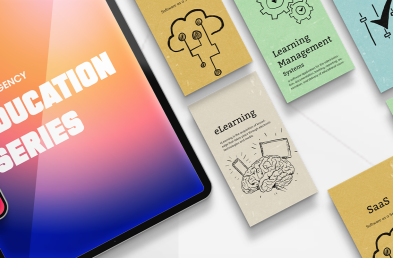When it comes to creating courses for our workforce, we all want to be the best, the most engaging, and ensure we have great results.
By understanding who we are engaging with through our course and establishing a clear roadmap to reach our learning objectives, our development process will be easier and more efficient.
But when designing an interactive course, a presentation, learning activities or even creating a layout for your course, it is important to implement practices that benefit the course developers as much as the learners.
A straightforward, efficient development process goes a long way. Designing based on accessibility for the end-user nurtures understanding, fosters knowledge retention, supports positive feedback, and promotes growth and improvement.
I like to apply four best practices of instructional design to my development process when creating a new course at Premergency.
Simplicity
Simplicity is essential to the accessibility of the presentation across a broad audience of end-users. Complexity is distracting, boring, and tedious. It leads to a lack of attention or motivation from an audience who aren’t predisposed to the training topic.
Don’t saturate your audience with difficult-to-read information. Think of them as kids. We need our kids to understand what we are saying. Let’s make it easy for them.
And don’t forget, simplify your more technical content. Creating visual resources to communicate an idea that can be complicated is a great way to reach your learners and ensure they understand what you are saying.
Self-Paced Learning
Self-paced learning allows students to learn in a low-pressure environment. No student retains information the same, and encouraging a comfortable self-paced environment will maintain their motivation to further their knowledge.
A forced-pace environment can spell disinterest for the frustrated student, further impacting real-life scenarios down the road. Not everyone works well under pressure. But everyone can work at their own pace.
As a designer, encourage a “foundation” mentality. Once a “foundation” of knowledge has been built in a self-paced environment, the student will carry over learned knowledge into real-world confidence.
Cognitive Load
“Cognitive load” refers to the “amount” of knowledge presented to a student in the same period.
If there’s too much information for the student to absorb at once, their “cognitive load” can become maxed out, meaning they only retain bits and pieces of information instead of the entire picture.
While an attractive design is important, an even flow of information presented to the user is of greater importance to maximize retention of information and not exceed “cognitive load”.
Always remember to design your course in a way that doesn’t saturate the learner. You can break it down, use different activities, visuals, and many more options.
Testing
To top it all over, end the course with a form of knowledge testing. This will challenge the student to prepare them for the real world better and confirm that they have a well-rounded understanding of the training material.
Testing doesn’t need to be boring. You can have interactive activities with a scoreboard to foster competitiveness, and you can gamify your learning strategy or even apply storytelling to your classic testing options to make it engaging.
These design principles play off each other; without one, the others may suffer, in turn hindering the student. Let’s keep in mind that designing a course is a comprehensive process in which every section works to optimize results.
With ALEN, Premergency’s LMS, you have great interactive options for course development that will allow you to create a well-structured and friendly course that also meets the developer’s requirements, creating an optimized interface and a great learning experience.




